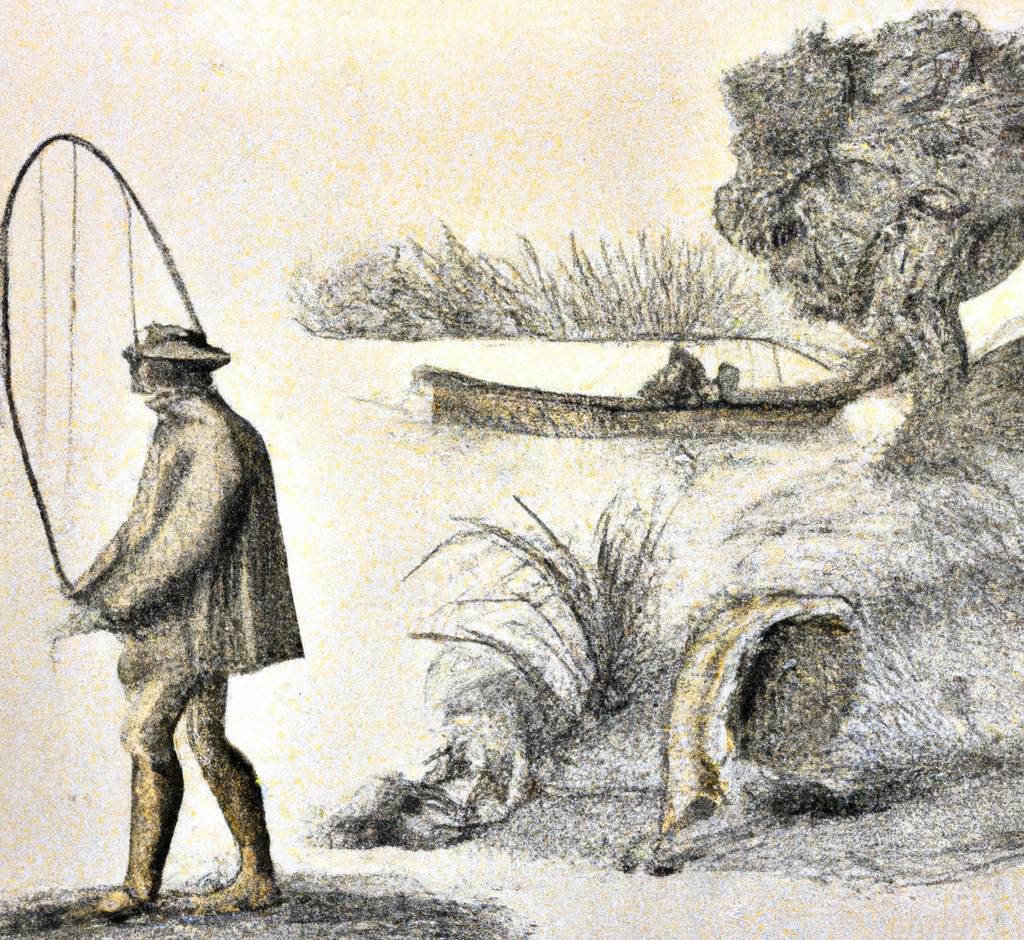A historical overview of Angling and Fishing


I have always been fascinated by the history of angling and fishing techniques. From the earliest days of human civilization, people have been using various methods to catch fish, and over time, these techniques have evolved and improved. From the use of stone and bone hooks to the development of sophisticated artificial lures, the history of angling is rich and fascinating. In this article, we will explore the evolution of angling techniques, from the earliest known examples to the modern methods used by today’s anglers. Whether you are a seasoned fisherman or just starting out, I hope this article will provide an engaging and informative look at the history of this timeless pastime.
Angling, or the art of fishing with a hook and line, has been a popular pastime for centuries. Throughout history, anglers have used a variety of different materials to make hooks, lures, and other fishing equipment. In this article, we will explore the history of angling and the development of fishing techniques over time.
The earliest known evidence of angling dates back to the Upper Paleolithic period, when humans first began using sharpened bone and stone to make hooks for fishing. Over the centuries, anglers have continued to innovate and improve upon their equipment, using a wide range of materials to make hooks and lures. For example, the ancient South Sea islanders used mother-of-pearl for their lures, which also served as hooks. In Ireland, a bronze hook was discovered that had the familiar Limerick bend.
In addition to the materials used to make hooks, anglers have also experimented with different types of bait over the years. In ancient times, anglers used both live and dead bait, as well as artificial lures that resembled natural prey. Ælian, an ancient Roman naturalist, even mentions the use of artificial Mayflies by the Illyrians.
As the centuries passed, anglers continued to develop new and improved methods for catching fish. In the Middle Ages, the Waltonian angler and his English predecessors often made their own fishing equipment. The Treatise, a fifteenth-century text on angling, provided detailed instructions for making your own rod, line, and hooks. The rod was made of a six-foot long staff of hazel, willow, or ash, which was heated in an oven and allowed to dry for several weeks. The pith was removed from the rod and the butt was bound with iron hoops. The top was fitted with a noose for attaching the line, which was made of hair or fine gut. The hooks were made from small quarell needles.
In the seventeenth century, Barker’s Treatise on Fishing with an Angle provided further guidance on the art of angling. Barker recommended using a single hair next to the fly, arguing that it would result in more rises and more fish caught. He also suggested using a ten-foot rod for salmon fishing, with a six-foot top for added stiffness and strength. Barker’s illustrations of a “winder” or reel, however, are difficult to decipher.
As angling techniques continued to evolve, so too did the use of flies in fishing. In the seventeenth and eighteenth centuries, salmon flies were often made with six wings, although the specific materials and colors used varied widely. The controversy over whether fish could distinguish colors was a topic of debate at the time, with some anglers arguing that only size and shade mattered when choosing a fly. Izaak Walton, the author of The Compleat Angler, suggested that three or four properly made, not too big flies would suffice for most trout in most rivers during the summer.
Today, angling continues to be a popular pastime, with many anglers experimenting with different techniques and equipment to improve their chances of success. Whether using live bait, artificial lures, or flies, the key to successful angling is skill and practice. As Sir Herbert Maxwell, a renowned angler, once said, “the greatest pleasure in angling is to see the fish take the bait, for even when they do not rise, the water’s music is something to hear and think about.”

